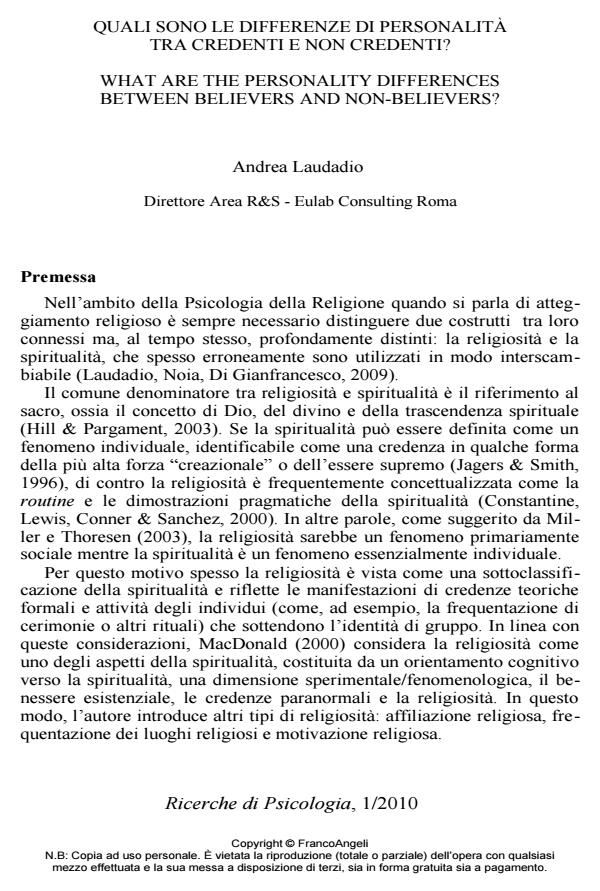What are the personality differences between believers and non-believers?
Journal title RICERCHE DI PSICOLOGIA
Author/s Andrea Laudadio
Publishing Year 2011 Issue 2010/1 Language Italian
Pages 30 P. 95-124 File size 281 KB
DOI 10.3280/RIP2010-001006
DOI is like a bar code for intellectual property: to have more infomation
click here
Below, you can see the article first page
If you want to buy this article in PDF format, you can do it, following the instructions to buy download credits

FrancoAngeli is member of Publishers International Linking Association, Inc (PILA), a not-for-profit association which run the CrossRef service enabling links to and from online scholarly content.
Numerous international studies have been completed on the issue of personality differences between spiritual and religious people, although none of these studies have ever been conducted in Italy. More specifically, two tools have been used to analyse these differences: the Big Five Questionnaire (Caprara, Barbaranelli, Borgogni, 1993) and the RAS - Scala di Atteggiamento Religioso (Religious Attitude Scale) (Laudadio, Baumgartner, D’Alessio, in press), which were administered to a sample of 3,019 people (52.26% females) with an average age of 40. The analyses confirm a relationship between the dimensions of "Personality", "Religiosity" and "Spirituality". The cluster analysis shows that "Religious Believers" are more 'Conscientious' and 'Friendly' but less 'Energetic' and 'Emotionally Stable' compared to the other two groups. This result is in line with what has been shown by Saroglou (2002) in the conclusion of his meta-analysis. Numerous gender differences have been observed regarding the relationship between these two constructs and certain features, which may be attributable to the specific characteristics of Italians in relation to the dimensions of "spirituality" and "religiosity".
Andrea Laudadio, Quali sono le differenze di personalità tra credenti e non credenti? in "RICERCHE DI PSICOLOGIA " 1/2010, pp 95-124, DOI: 10.3280/RIP2010-001006